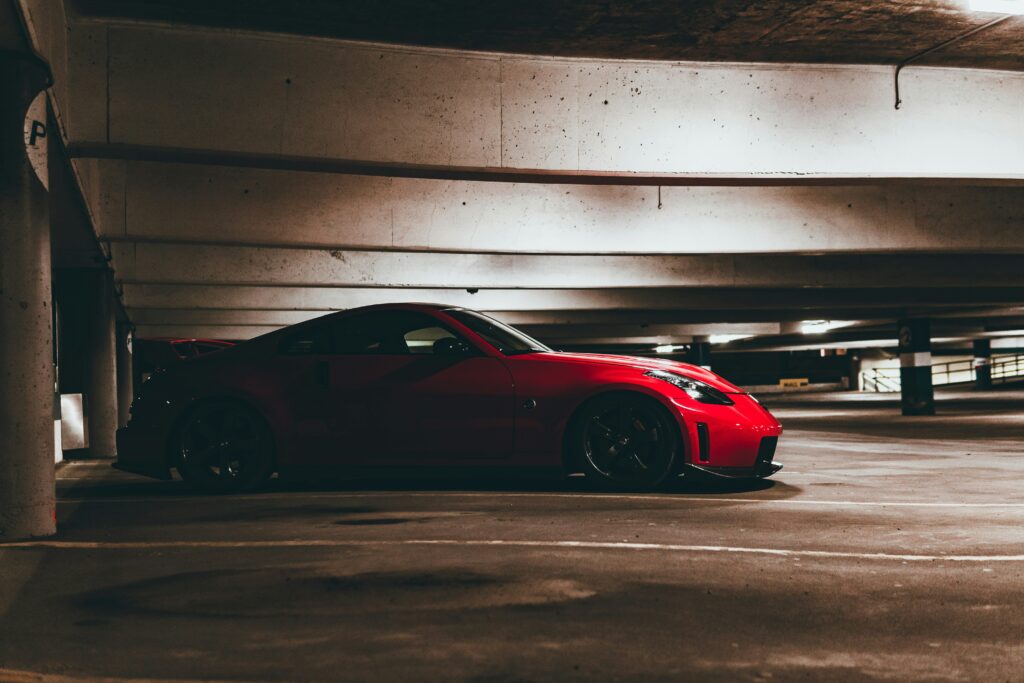When it comes to car maintenance, protecting your vehicle’s paint job is often one of the top concerns for car owners. Not only does the paint job contribute to the aesthetic appeal of the car, but it can also affect the resale value and long-term durability of your vehicle. If you’re looking to shield your vehicle from the hazards on the road, paint protection film (PPF) may be the answer. Understanding how PPF protects against rock chips and scratches can help you decide whether this layer of defense is worth the investment. Join us as we explore the science behind PPF’s impact-absorbing capabilities, its benefits, and why more and more car owners choose it to protect their vehicles.
What is paint protection film (PPF)?
Paint protection film, often abbreviated as PPF, is a clear, durable film applied over a vehicle’s exterior surfaces to shield the paint from damage caused by various environmental and mechanical factors. This film is composed of flexible urethane that is highly resilient to chemical damage and impacts. PPF is practically invisible when a professional installs it. Additionally, with recent advances in technology, it offers self-healing properties that make minor scratches and swirl marks disappear.
How PPF Protects Against Rock Chips and Scratches
The primary strength of PPF in protecting against rock chips and scratches lies in its construction. Urethane is a highly flexible yet strong material. This flexibility and strength allow it to resist impacts, meaning it can absorb the energy from rocks, gravel, and other debris that hit your car while driving. When these hazards hit a PPF-coated surface, the film disperses the energy over a large area, minimizing the risk of paint chipping and denting.
Beyond its impact-absorbing capabilities, modern PPF also possesses self-healing technology. With the heat from the sun, minor scratches, abrasions, and swirl marks will slowly fade away. The heat causes the urethane’s molecular structure to realign, filling in any scratches or blemishes. This innovative feature keeps your car looking as good as new, even after encountering gravel roads.
Science Behind PPF: How Does It Work?
To fully grasp how PPF protects against rock chips and scratches, it’s essential to look into the science of its construction. The film is a multi-layered material, each layer providing a unique protective feature:
-
Polyurethane Top Layer
This layer is responsible for impact absorption and self-healing. This creates elasticity that causes the film to flex upon impact, while the self-healing technology allows minor abrasions to disappear with heat application.
-
Adhesive Layer
The adhesive layer is what creates a bond between the film and the vehicle’s paint job. The adhesive is strong enough to securely adhere to the vehicle, but gentle enough not to harm the underlying paint job.
-
Clear Coat Layer
Some PPF brands add a clear coat on top for shine and gloss. This layer creates a showroom-like shimmer, enhancing the vehicle’s aesthetics.
Together, these layers form a resilient shield capable of absorbing impacts, resisting scratches, and protecting the car’s paint from environmental contaminants.
Key Benefits of Using PPF on Your Vehicle
Now that you know how PPF protects against rock chips and scratches, let’s explore why so many car owners are turning to this solution to protect their vehicles’ exteriors.
1. Maintains Aesthetic Appeal
Rock chips and scratches can quickly detract from your vehicle’s appearance. PPF keeps your car looking polished and fresh, preserving its original paint for years. This can help prevent the need for new paint jobs, which can cost thousands of dollars.
2. Enhances Resale Value
With a pristine paint job, your car is sure to get a good resale value. Vehicles with PPF-coated surfaces show minimal signs of wear and tear, making them more attractive to potential buyers.
3. Invisible Protection
Unlike other paint protection methods, like paint sealants or ceramic coatings, PPF is practically invisible when applied. The film’s clear, natural quality ensures that it doesn’t alter the car’s color or design, allowing you to enjoy the look of your vehicle without sacrificing style for protection.
Factors to Consider Before Installing PPF
While PPF provides excellent protection, it’s essential to consider a few factors before installation:
-
Cost
High-quality PPF can be quite an investment, and prices vary depending on the size of your vehicle and the areas you want to protect. However, the long-term paint repair and maintenance savings may justify the cost.
-
Installation Quality
Professional installation is recommended for best results. DIY application can lead to bubbles and peeling.
-
Maintenance
While PPF is low maintenance, it’s still beneficial to wash your car regularly and avoid abrasive materials or chemicals when cleaning. Some PPF manufacturers recommend using PPF in combination with a wax or other top coat for added protection.
Why Many Car Owners Prefer PPF for Protection
The primary reason car owners choose PPF is its ability to protect against rock chips and scratches more effectively than other options on the market. Unlike ceramic coatings or wax, PPF provides a physical barrier that absorbs impact, disperses force, and even heals itself from minor abrasions, making it a comprehensive solution for paint protection.
Ultimately, for car owners looking to preserve their vehicle’s aesthetic appeal and longevity, PPF offers a durable, invisible, and effective shield against the challenges of everyday driving. From rock chips to scratches and UV exposure, PPF provides multi-faceted protection that helps maintain your car’s original look, reduces maintenance costs, and enhances its resale value.
Call Wraptitude Today!
Paint Protection Film guards against wear and tear and keeps your vehicle looking newer for longer. Protect your vehicle with Wraptitude’s precision PPF experts! Contact us today for a free PPF quote for your car!

